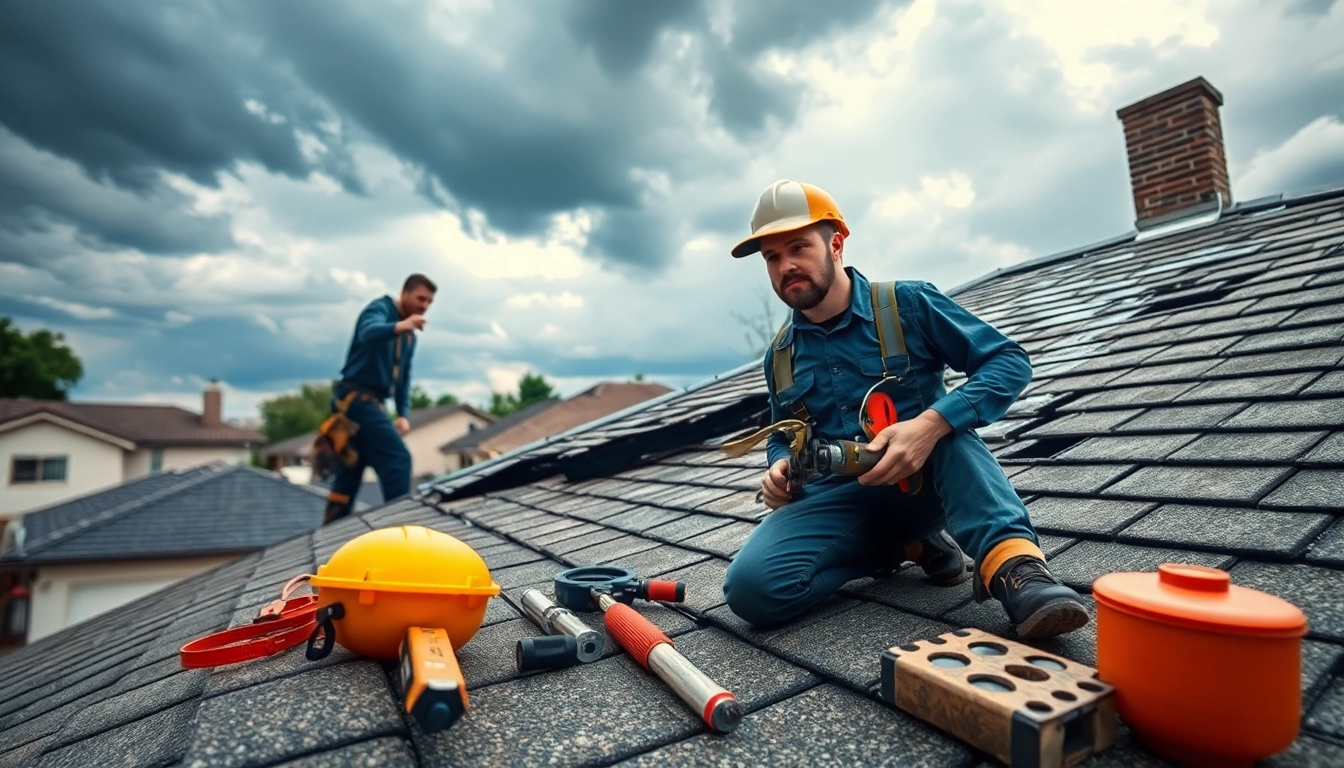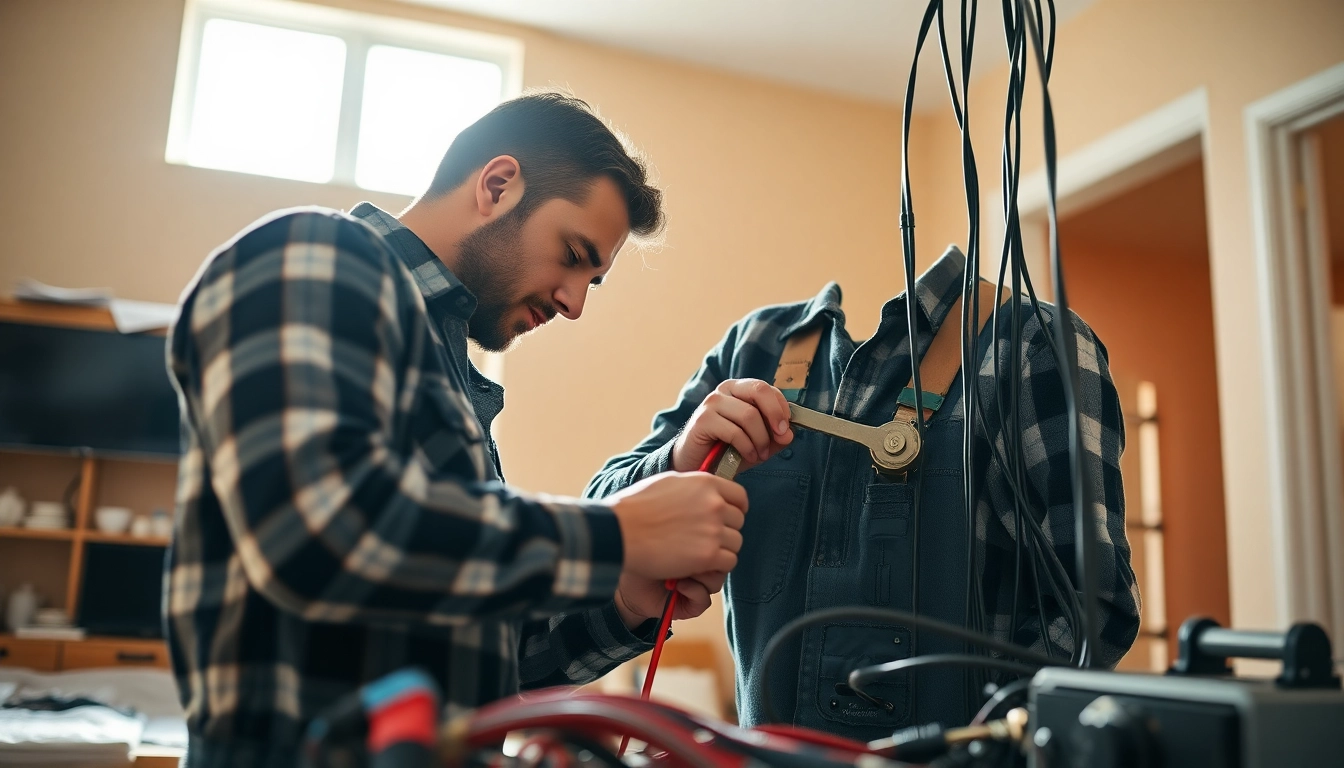Understanding Emergency Roof Repair in Texas
Roofing emergencies in Texas are more common than you might think. The state is well-known for its unpredictable weather patterns, which include severe storms, hail, and strong winds. Such conditions often lead to unexpected roofing issues that require immediate attention. Understanding the nature of emergency roof repairs, their causes, and their implications is crucial for homeowners. If you’re facing a roofing concern, especially one that demands urgent intervention, emergency roof repair Texas should be your go-to solution.
What Constitutes an Emergency Roof Repair?
An emergency roof repair is defined as any immediate action needed to fix a severe roofing issue that poses a risk to your property or its occupants. Such emergencies could include:
- Severe leaks during heavy rain
- Structural damage caused by storms or fallen debris
- Significant hail damage that compromises the roof’s integrity
- Blocked gutters leading to water pooling
These scenarios require swift evaluation and action from professional roofing specialists to mitigate further damage and ensure the safety of the home.
Common Causes of Roofing Emergencies in Texas
Texas weather is notorious for its extremes, which significantly contribute to roofing emergencies. Some common triggers include:
- Storms: Heavy rain, thunderstorms, and hurricanes can lead to shingles being blown off or roofs being punctured by debris.
- Hail Damage: Texas is frequently subject to hail storms, which can severely dent or crack roofing materials, leading to leaks.
- Wind Damage: Strong winds can lift shingles, causing them to break or become dislodged, resulting in water damage.
- Temperature Fluctuations: The stark temperature changes between seasons can cause roofing materials to expand and contract, leading to cracks and leaks.
Being aware of these common causes can help homeowners anticipate potential issues and act swiftly in case of emergencies.
The Importance of Timely Response
Responding quickly to roofing emergencies is critical. A delay in fixing a leak, for example, can lead to mold growth, wood rot, and structural damage, resulting in costly repairs. Immediate intervention can also safeguard your home insurance policy, as neglecting repairs may lead to further complications not covered by insurance.
Signs You Need Emergency Roof Repair
Identifying Visible Damage
Not all signs of roofing emergencies are apparent from the ground level. Here are some visible indicators that require immediate attention:
- Missing or Broken Shingles: Inspect your roof for any missing, cracked, or curling shingles, which can allow water to enter.
- Dips and Sagging: A sagging roof may indicate structural damage and should be inspected immediately.
- Water Stains: Interior water stains on ceilings or walls are a clear sign of roofing issues.
Listening for Warning Signs
Sometimes, a roofing emergency can manifest through sounds. Be attuned to:
- Dripping Water: A repeated dripping sound inside your home can indicate a significant leak that needs urgent assessment.
- Creaking or Popping: Sounds from your roof structure can be an indication of movement due to internal damage.
When to Call in the Experts
If you notice any of the signs mentioned above or if a recent weather event has caused concern about your roof’s condition, it’s time to call a professional. Prompt service can prevent further damage and higher repair costs.
Choosing a Reliable Emergency Roofing Contractor
What to Look For in a Roofing Company
Choosing a reliable contractor for emergency roof repairs is critical. Look for the following attributes when evaluating potential contractors:
- Experience: Ensure the contractor has extensive experience in emergency roofing services.
- Licensing and Insurance: They should be properly licensed and carry insurance to protect you from liability.
- Reputation: Check online reviews and ask for references to gauge their reliability and quality of work.
Questions to Ask Before Hiring
Engage with potential contractors by asking the following questions:
- What is your response time for emergencies?
- Are you familiar with insurance processes for roof repairs?
- Can you provide a written estimate before starting the work?
Understanding Contractor Warranties and Guarantees
A reputable roofing contractor should offer warranties for their work. Confirm the types of warranties available, covering both materials and workmanship. This is important for your peace of mind and financial protection after repairs are completed.
Preparation for Roof Emergencies
Steps to Take Before Help Arrives
In the event of a roof emergency, there are several preparatory steps homeowners can take while waiting for professional help:
- Document Damage: Take photos of any visible damage to have a clear record for insurance purposes.
- Contain Water: If there’s leaking, use buckets or containers to catch water and prevent flooding or damage inside the home.
- Secure the Area: Make sure to keep your premises safe by cordoning off affected areas, especially if there are hazards involved.
How to Safeguard Your Home
Prevent further damage while waiting for help by:
- Removing valuables from the impact zone.
- Covering damaged areas with tarps or plastic sheets if safe to do so.
- Ensuring gutters and drains are clear to allow any rainwater to flow away.
Understanding Temporary Repairs
Temporary repairs can serve as a stopgap measure until professional help arrives. Apply tarps or sealants only if you feel it is safe to do so. For any significant damage, rely on professionals who can perform permanent repairs correctly.
Post-Repair Considerations
Inspecting Your Roof After Repairs
Once emergency repairs are complete, it’s essential to conduct a thorough inspection. Ensure that repairs were implemented effectively and check for any signs of residual leaks or weaknesses in the roof.
Regular Maintenance Tips to Avoid Future Issues
Regular roof maintenance is key to preventing future emergencies. Homeowners can:
- Schedule annual roof inspections.
- Keep gutters clear of debris.
- Trim overhanging branches that may pose risks during storms.
Knowing Your Insurance Coverage
Understanding your homeowner’s insurance policy is crucial, especially when dealing with repairs. Check your coverage for roof repair and replacement, learning about your deductible limits and what constitutes covered damage. This knowledge empowers homeowners to make informed decisions post-repair.



